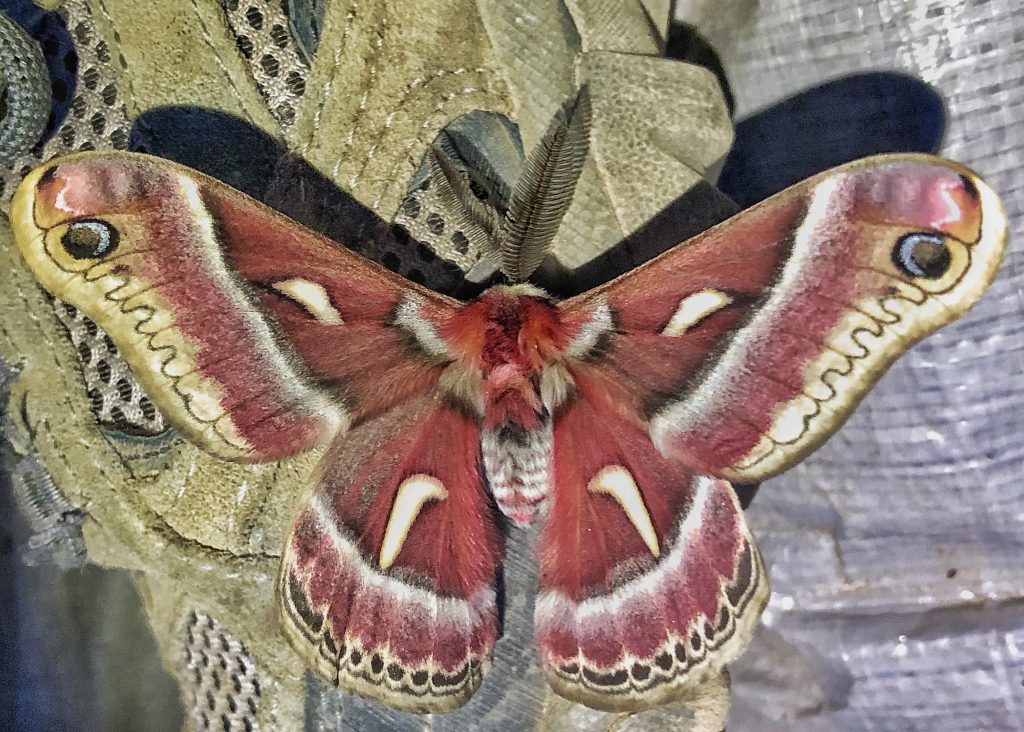
The first time I found one of these members of the family Saturnidae was last April on a road trip to se Oregon with my nbo Morgan. Around 10pm we stopped outside of Prineville for a break, and I set up some lights. There was some moth action, but not a lot of diversity, so an hour or so later I was getting ready to tear down and move on when I saw a large shadow on the sheets. My first thought was that it was a bat, because I’ve heard about them hunting at lights, although I haven’t really experienced it. And then a big, beautiful Ceanothus Silkmoth landed on my shoe! I was very excited, but also worried it would fly away before I could photograph it. But it cooperated for long enough, and I was pretty much over the moon.
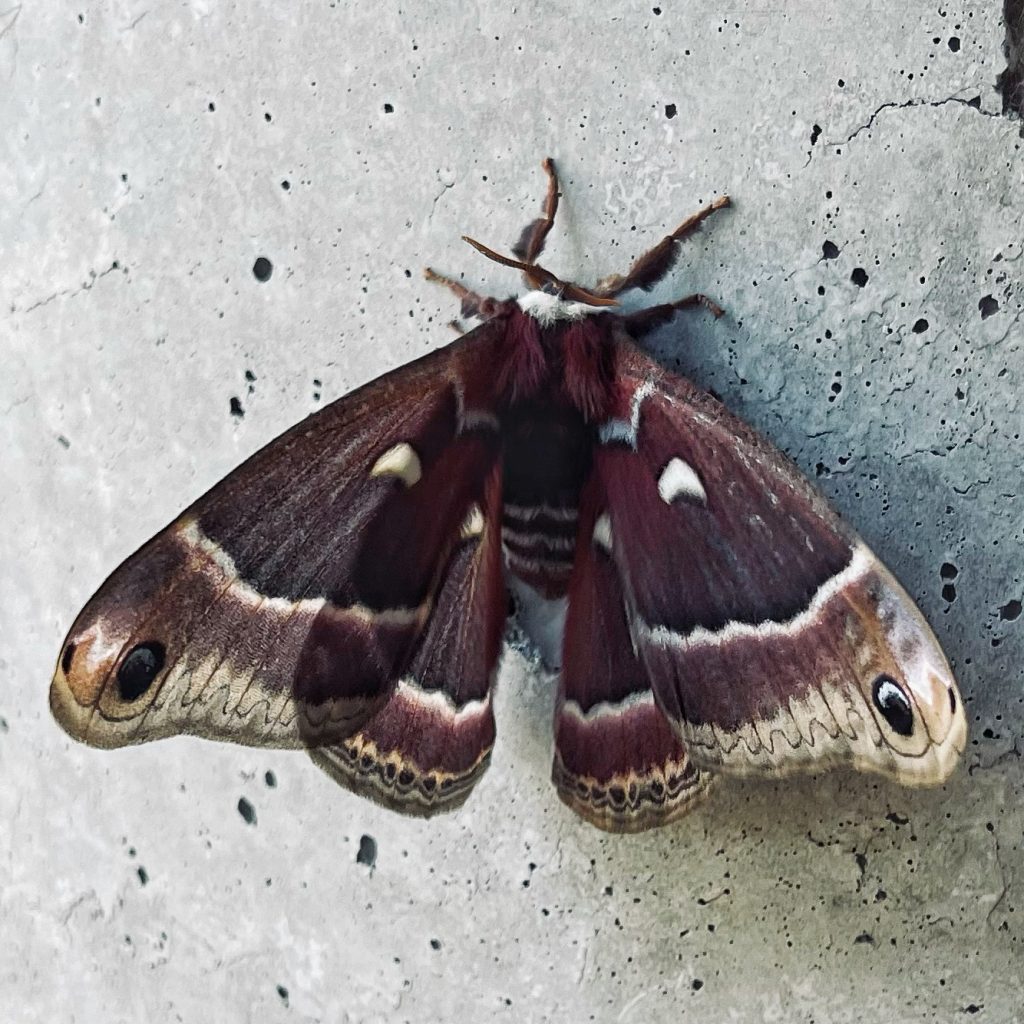
The 2nd one I saw was on Tuesday, the anniversary of the smartest and only unconflicted thing I’ve ever done in my life, which was marrying Pam. As I was pulling in to drop off a client at a medical clinic in Vancouver I saw a large dark shape on one of the concrete pillars near the entrance. Because of its size and bold markings I could tell from 20’ away that it was Hyalophora euryalus.
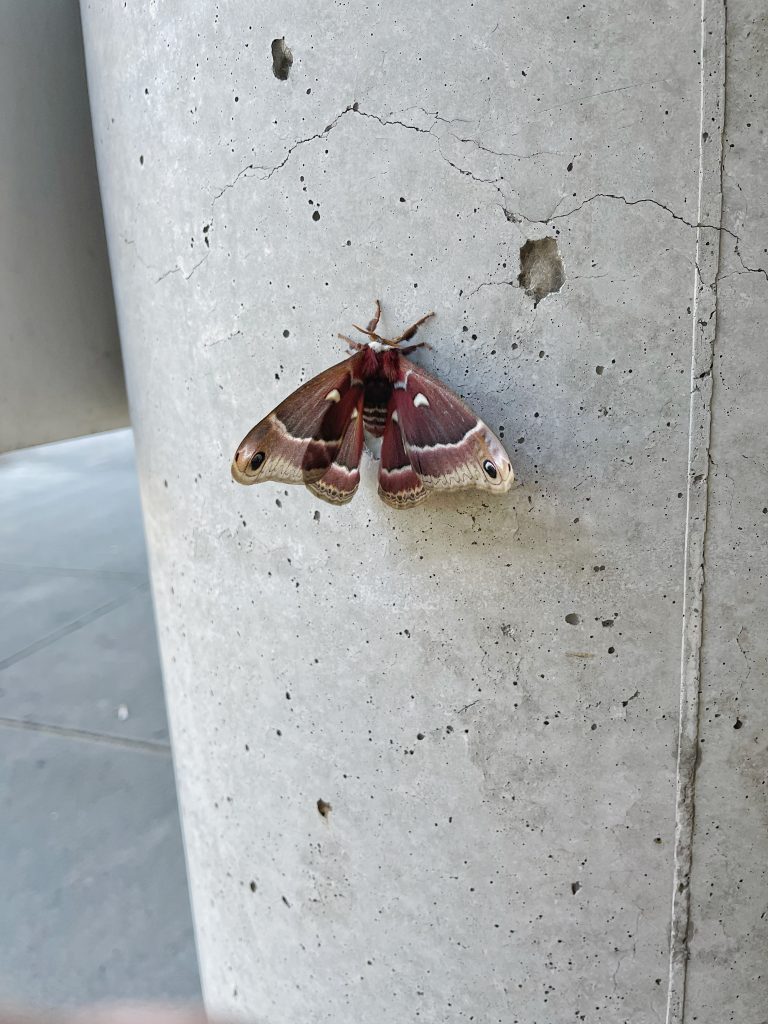
The whole time I was unhooking my client, wheeling them to their appointment, and dashing (as well as this overweight, out-of-shape, 60 year old man ever dashes) back down the stairs I kept thinking “…please please please…” And possibly my pleas were heard, because I was rewarded with that very cooperative moth still being perched on its pillar. Unfortunately I only had my cellphone with me, so they are not the greatest pictures, but still it felt like the universe was wishing me a happy anniversary.
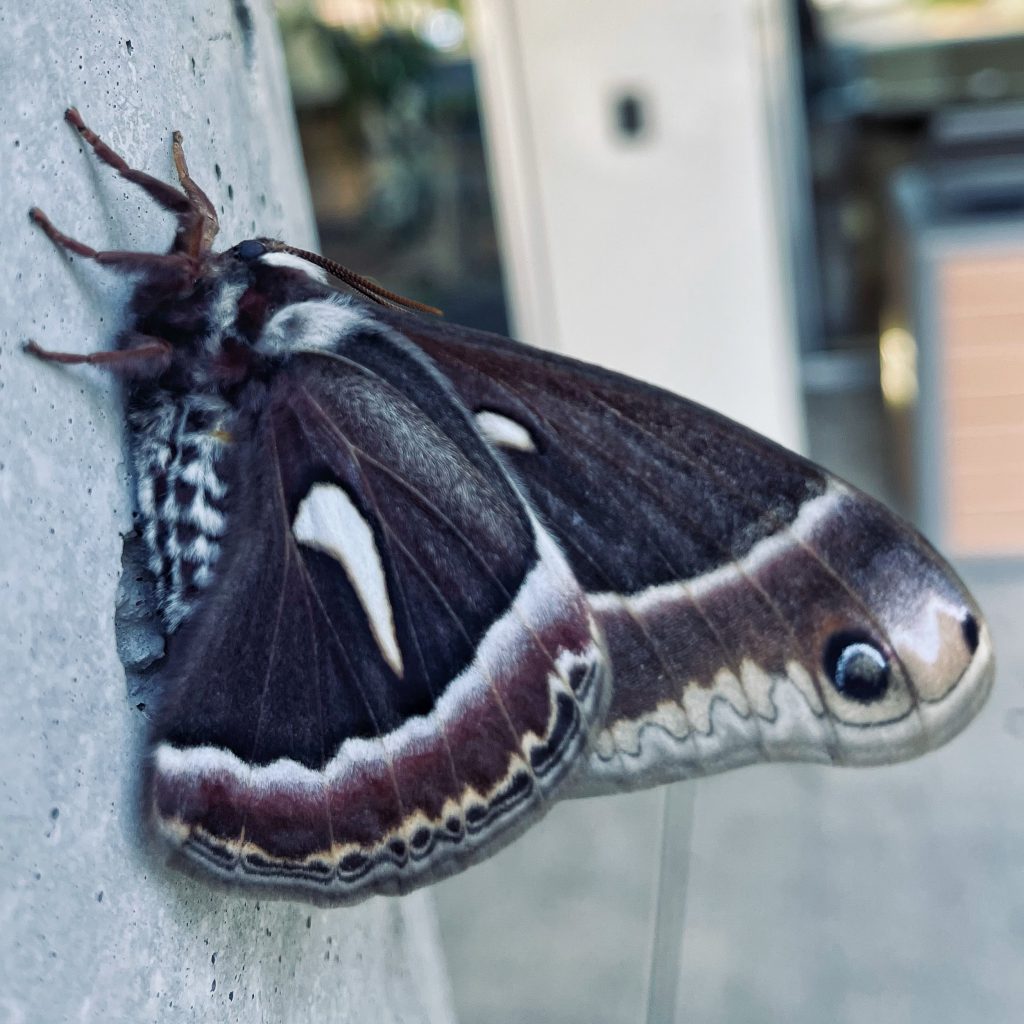
This species is not rare, but it is uncommon, though so far conservation measures haven’t been called for. And they are probably not as uncommon as it seems, since the short lifespan of the adults (who have only vestigial mouthparts and don’t feed in their imago form, which probably contributes to the fact that they only last about 2 weeks after eclosure), coupled with their tendency to fly later at night and into the dawn, leads to them not being seen by many people.
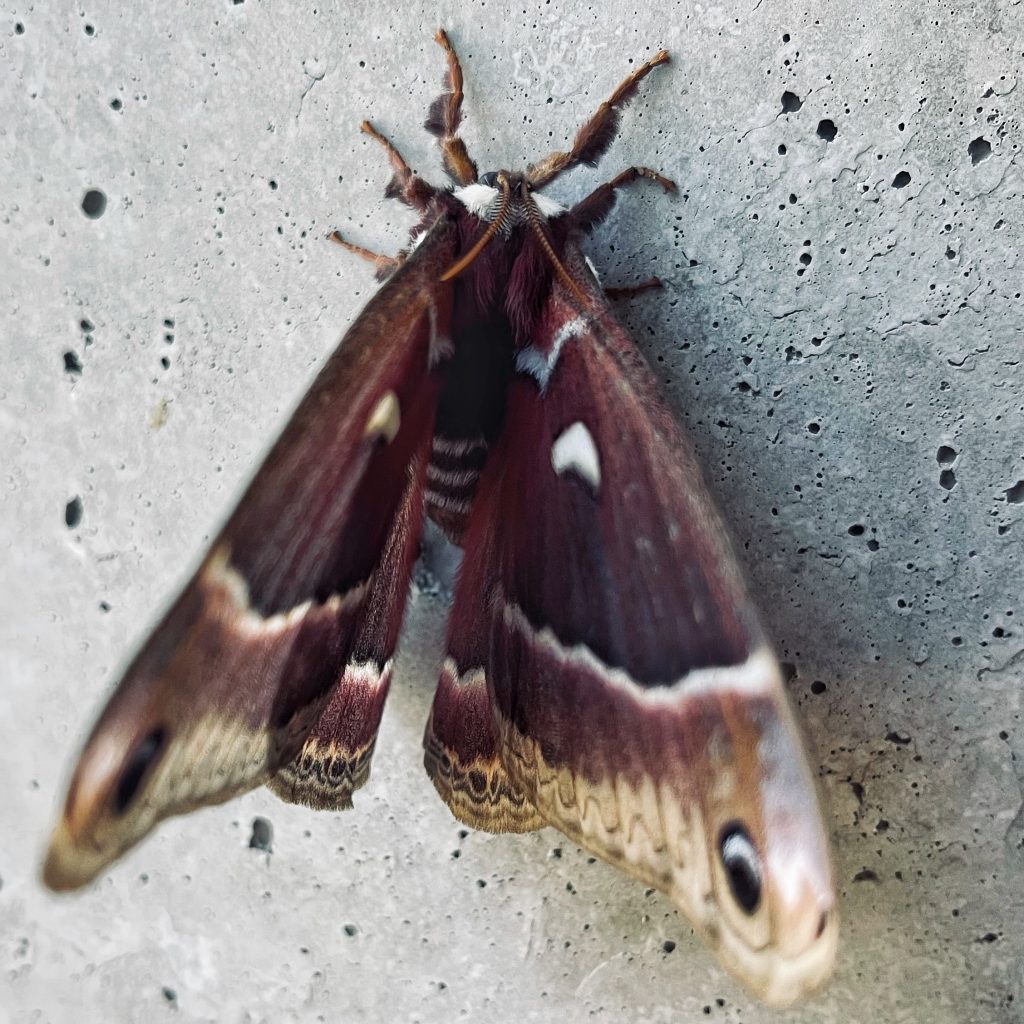
Though they are not reared for commercial purposes (that would be Bombyx spp., which are in a different family, Bombycidae), Ceanothus Silkmoth caterpillars do produce silk to make their cocoon. The problem would be finding enough empty ones to make the process worthwhile, and it would be irresponsible to collect active cocoons, unless one had absolute knowledge of how to store them to ensure survival and eclosure of the moth they contained.
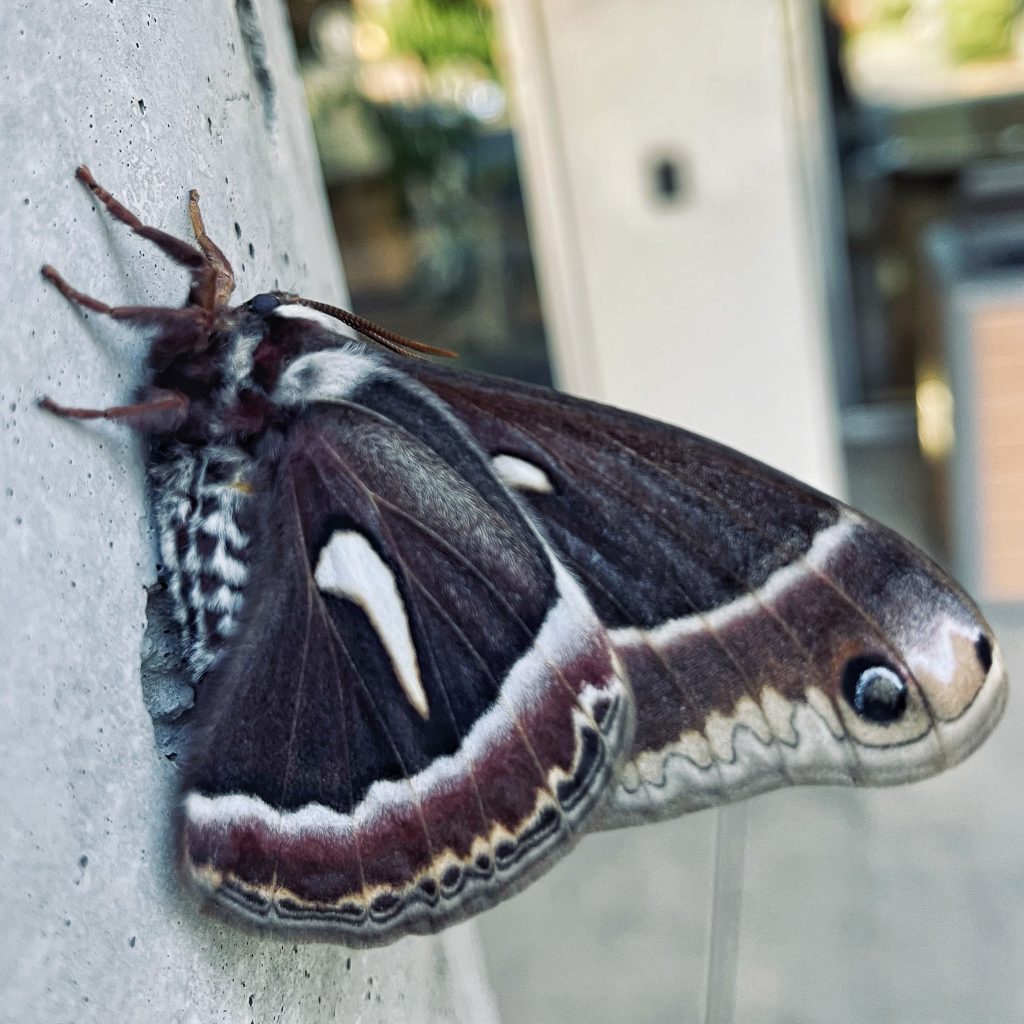
Those large, plumose antennae on the males aren’t just pretty to look at. They are scent receptors and are particularly attuned to the pheromones produced by the females, and they are so sensitive that they can detect pheromones from three miles away, and follow the upticks in concentration levels to find the female. Male Hyalophora euryalus may travel up to twenty miles in their short lifetime.
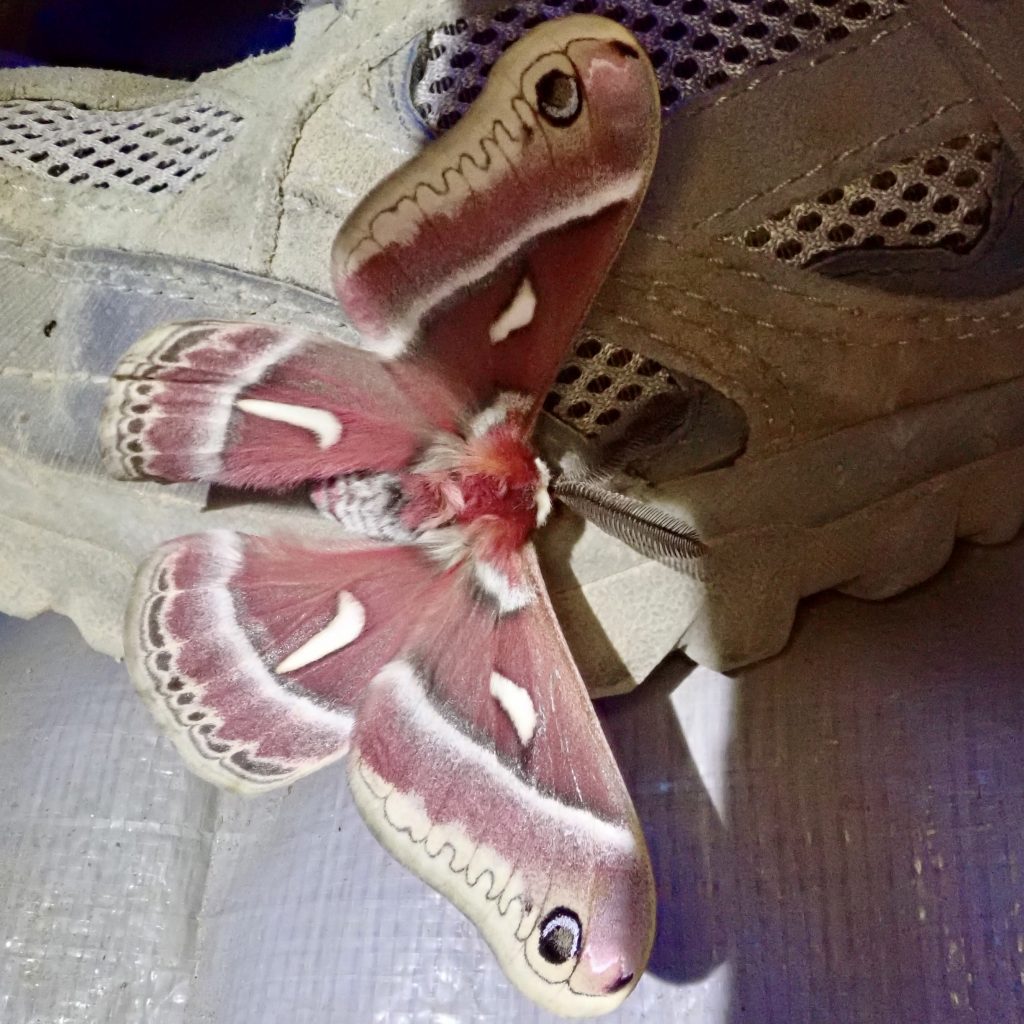
Description-Very large (fw length up to 2.5”; wingspan up to 5”) reddish brown moth with large white discal spots on fore- and hindwings, a large ‘eyespot’ near the forewing apex, and a long white postmedial line; forewing discal spot is bar to comma to crescent shaped, and hindwing discal spot is shaped like the Nike ‘swoosh’; L-shaped antemedial line is white; forewing margin tan with crenellated black line; has a white collar at the front of the thorax
Similar species–H. gloveri has a kidney shaped hindwing discal spot, grey rather than pink outside the postmedial band, and is only found in the eastern parts of our region.
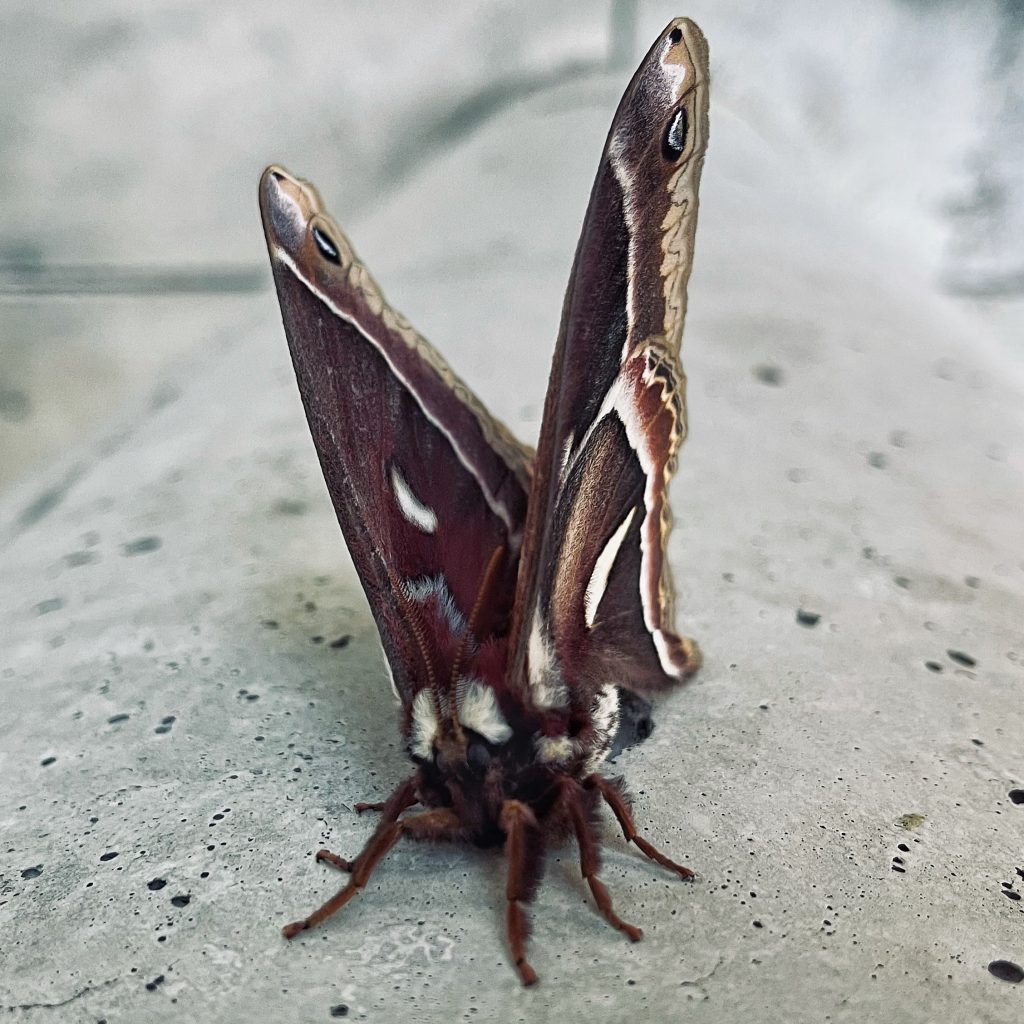
Habitat-Forests, riparian corridors, juniper woodlands, and higher elevation shrub steppe.
Range– West Coast endemic; region wide in appropriate habitat; mostly absent in the arid interior of Washington, and in se Oregon.
Eats-Adults do not eat; larval hosts include plants in the genera Ceanothus, Purshia, Arbutus, Prunus, Salix, Alnus, Betula, Ribes, Arctostaphylos, and many others.
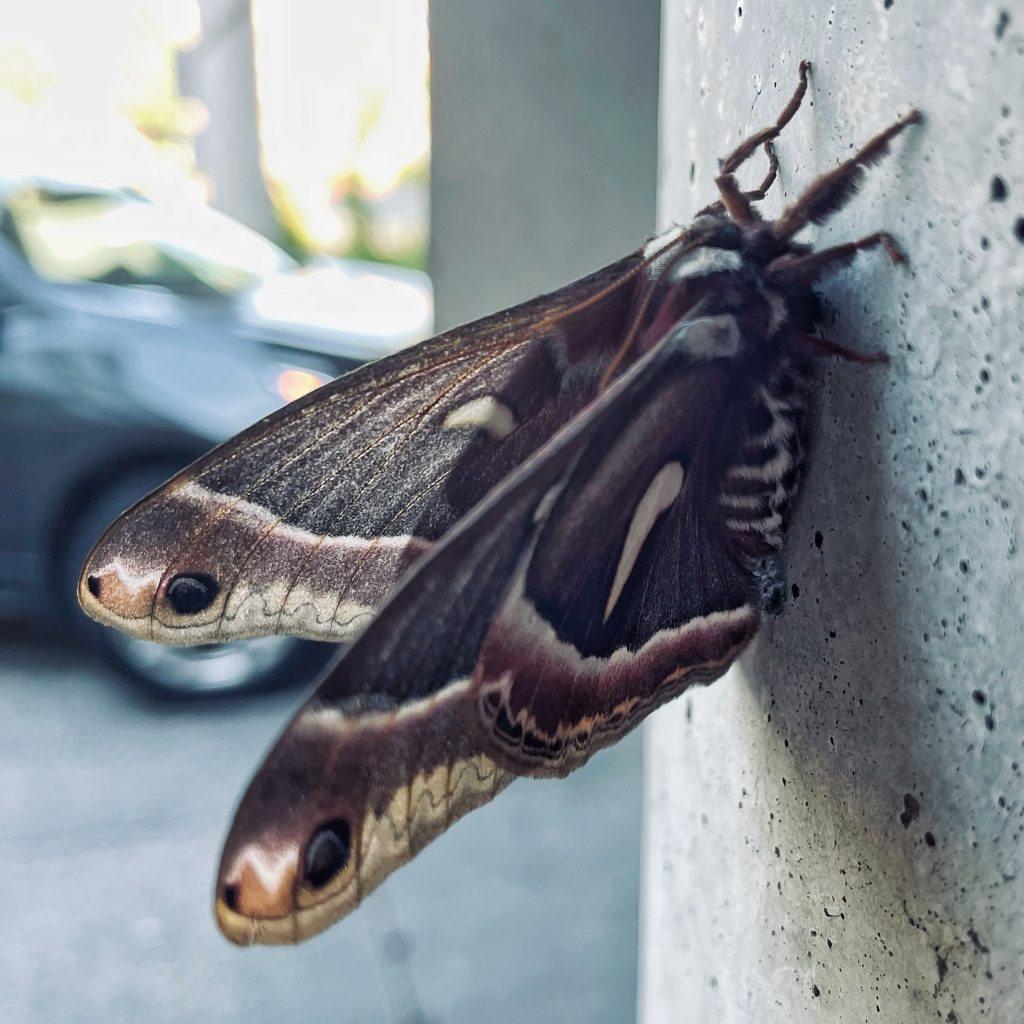
Reproduction-Univoltine; one to several eggs laid on the leaves of various host plants, up to 400 total; hatch in 9-14 days; over winters as a pupa in a large silk cocoon suspended from a limb of the host plant; There is a nice discussion of the changing forms of the caterpillars in each instar here.
Adults active-April to August, with peaks in May and June in our region
Etymology of names–Hyalophora is from the Greek words for ‘glass’ and ‘bearing/carrying’. Duncan (1841) proposed this name for certain Saturn Moths that had a clear discal spot, unlike Hyalophora euryalus which has a white discal crescent. The specific epithet euryalus is a combination of Greek (eurys) and Latin (ala) words, which translates as broad winged, for obvious reasons.
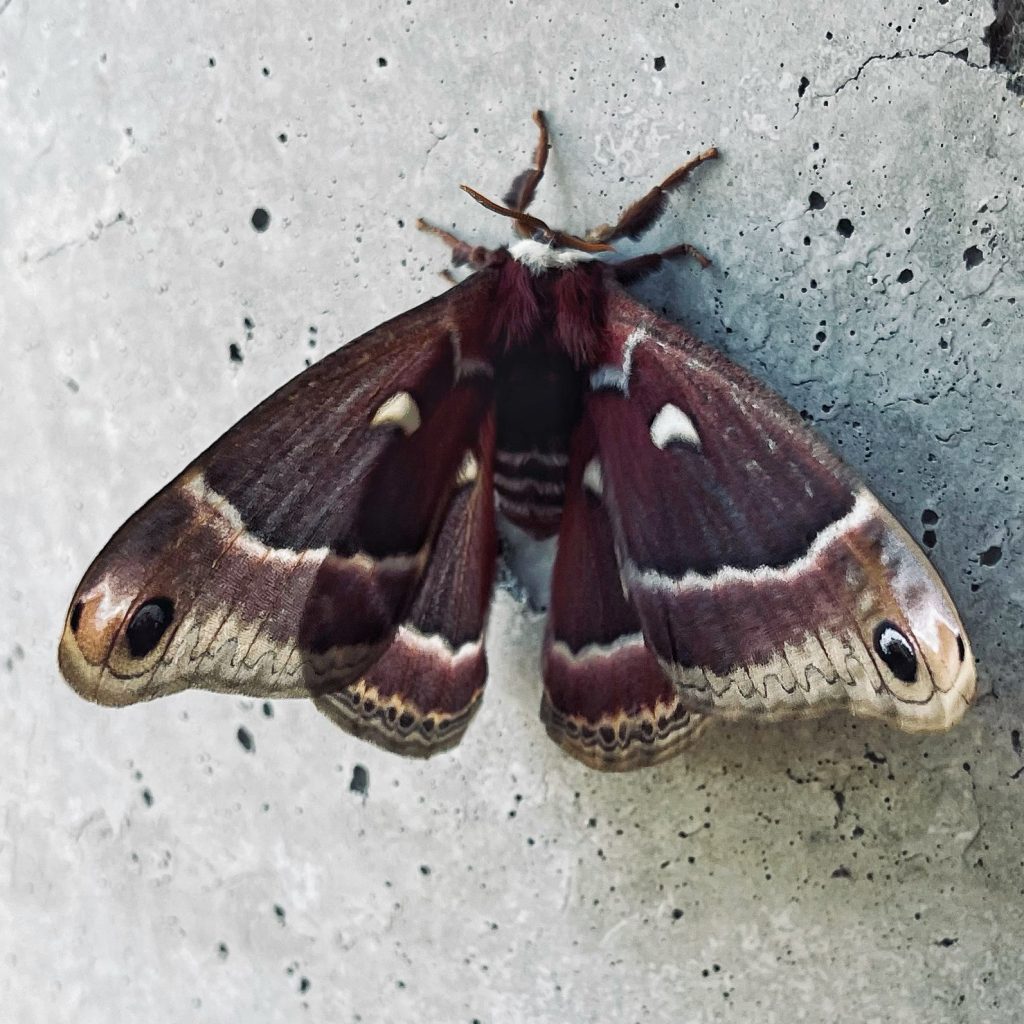
https://www.butterfliesandmoths.org/species/Hyalophora-euryalus
https://bugguide.net/node/view/42242
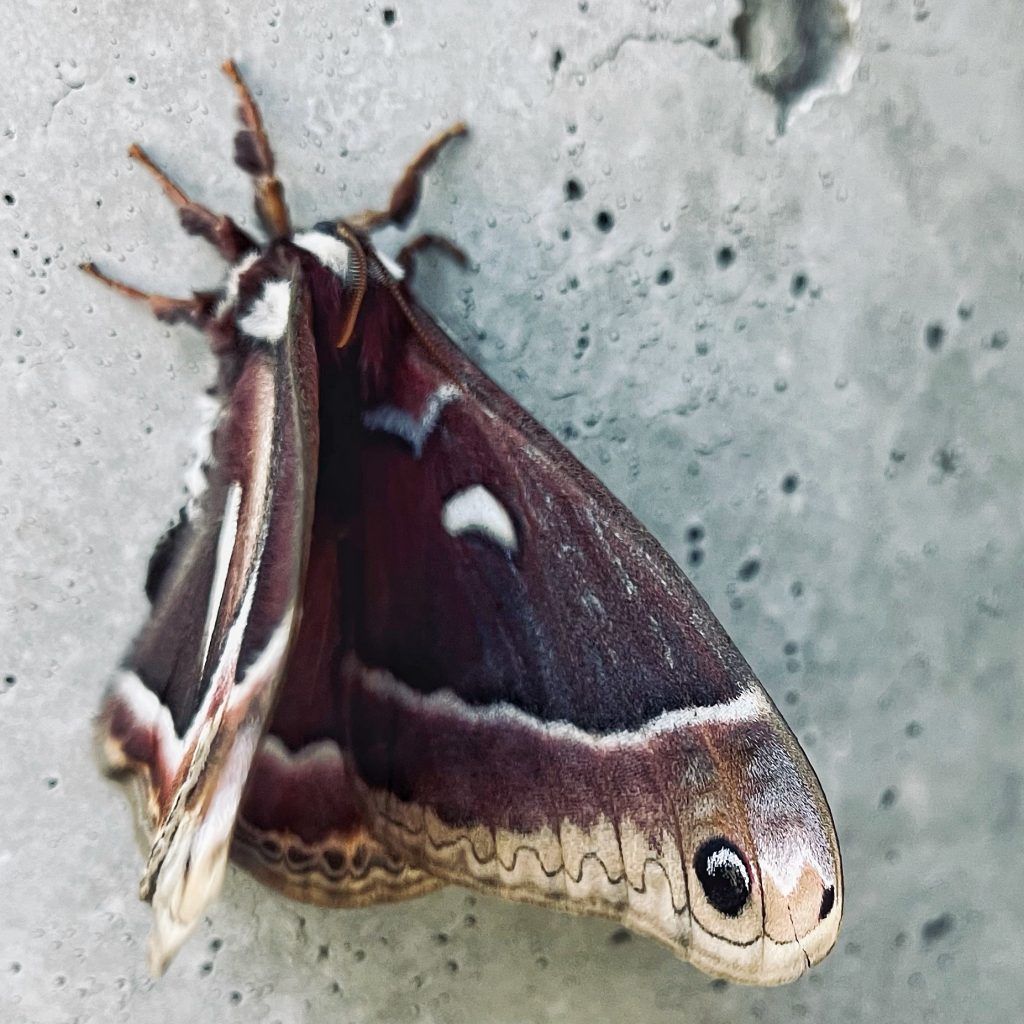
A belated HAPPY ANNIVERSARY to both of you! You could have mentioned it dude. You know my memory and in my defense, neither I or Arlene know when we were married…both the first and second time.🤣
Thanks Craig! Not sure why I didn’t mention it, but it definitely wasn’t because I expected you to remember 😀 Thanks for being there!
I just love your posts!!! About moths and butterflies it would be fantastic if you could also show the caterpillar stage of each and even the cocoon. I can only ask for the moon…
Well, I would if I could, but I’ve never seen either. Thanks for the kind words!
ha ha ha! and now I see the link…
I first saw this moth last year. I found a specimen drowned in a bucket of water on our front porch one morning. Such a beautiful moth. I had no idea they lived here in western Oregon. I kept that specimen. Then, this morning, I found another in the same way–floating in a bucket of water on our front porch in the morning. We do not normally have buckets of water sitting around like that. And, so strange that a moth would fall into it. Anyway, I scooped it our and sat it in the sun. I was sure it was a goner. But, a couple of hours later, it was gone! Then, I saw it several feet away. It was fluttering its wings, drying them. Yay! It soon took off. Such a great experience.
Very cool! A friend of mine recently found 2 of them on a deck in Rochester, Washington. ‘It’s the season! Thanks for sharing that with us!